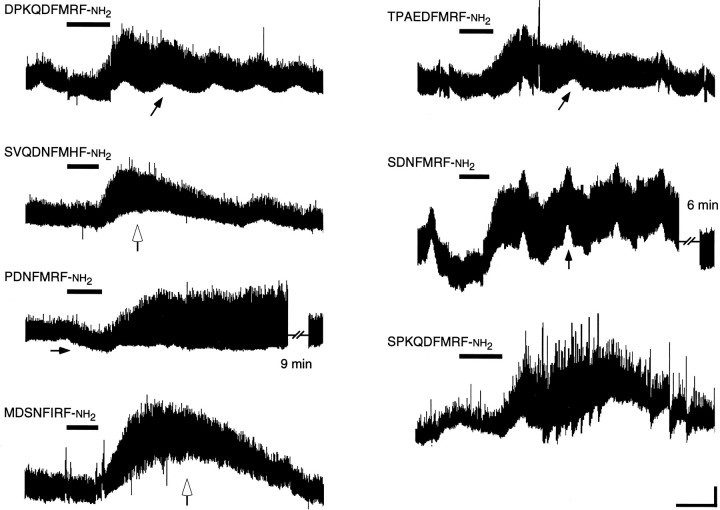Fig. 5.
The excitatory effects of each of the seven active peptides are slow to develop and are long-lasting; the time courses of the responses are similar. Peptides (each at 10-7m) were applied to the preparations during the periods indicated by the horizontal bars. The illustrated differences in kinetics reflect the differences among different preparations rather than consistent differences among the effects of the different peptides. Baseline shifts such as those indicated (small arrows) are attributable to subtle changes in the bath volume and have no detectable effect on contraction amplitudes. Slower baseline shifts in some preparations accompanied peptide-mediated increases in nerve-stimulated contractions (open arrows), particularly at higher peptide concentrations. These shifts are attributable to a decrease in the relaxation rate, which causes summation (an apparent increase in baseline tension). In control preparations in which the frequency of nerve stimulation is varied, this summation does not alter the amplitudes of individual contractions. Calibration: 200 pN, 100 sec.

